How to Efficiently Manage Users and Assign Administrative Roles in Google Workspace
Introduction
Ready to enhance your email and collaboration services with Google Workspace? This comprehensive guide will help you effortlessly manage users and assign administrative roles directly from your Google Workspace Admin Console.
Section 1: Accessing Your Google Admin Console
Log in to your Google Admin console at https://admin.google.com, and upon successful login, you will be landed on the dashboard, as illustrated in Figure 1 below.
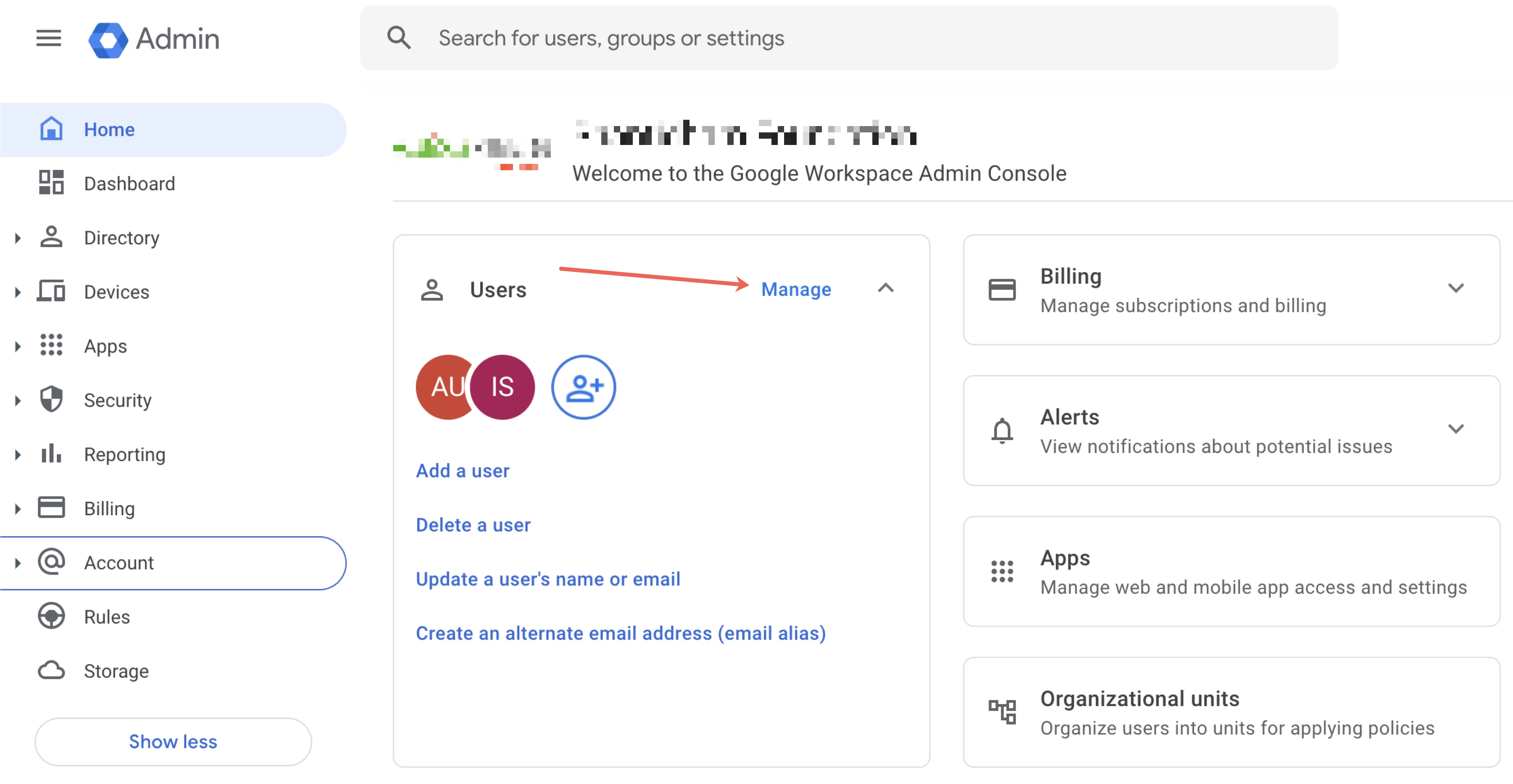
Section 2: Manage Users
On the dashboard page, click the Manage link, as illustrated in Figure 1 above, or click the left side menu Directory>Users, as shown in Figure 2 below. You will be redirected to the users' list page, where all the users will be seen in a tabular form.
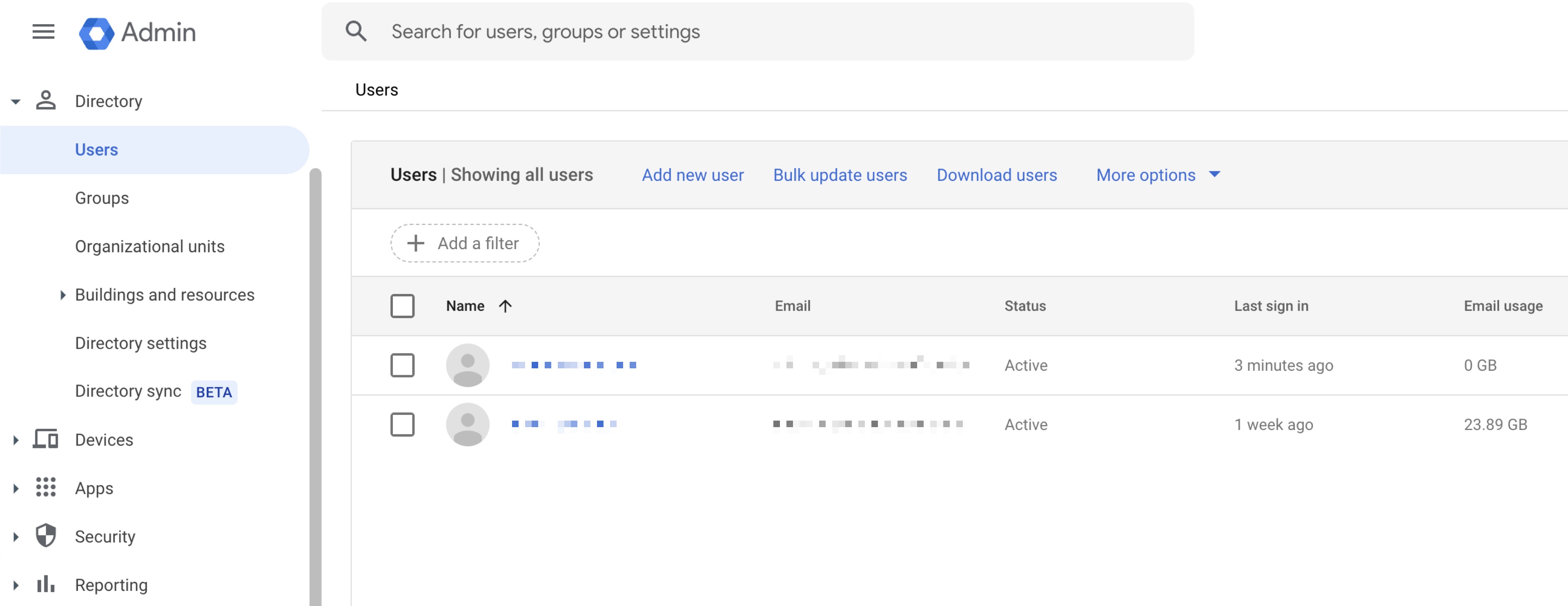
Click on the Add new user link on the top of the screen, as illustrated in Figure 2 above, and contact the Batoi Support Team if you see the message No license available for the new user, as shown in Figure 3 below.
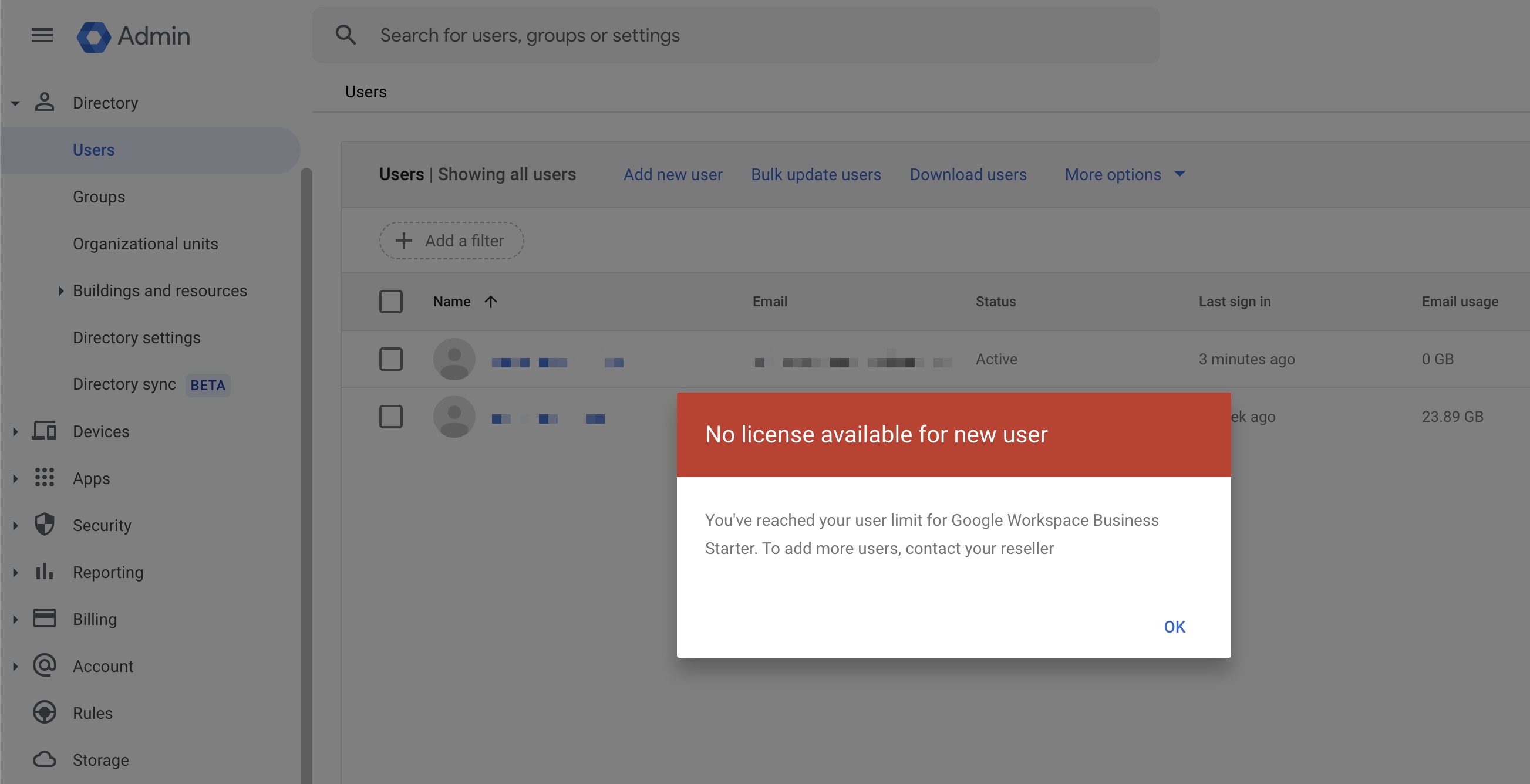
To purchase a new user license from Batoi Hosting, please follow the help article A Complete Guide to Purchasing and Managing Google Workspace through Batoi Hosting Control Panel.
Once you purchase the license, click on the Add new user link on the top of the screen, as illustrated in Figure 2 above, and the popup screen will open. Fill in the details and click the Add New User button, and the user will be added to the system.
- First and Last Name: (Mandatory)
- Primary email: (Mandatory)
- Secondary email: (optional) used to send the user details
- Phone number: (optional) used for multifactor authentication and other notification SMS service
- Password: (Mandatory)
- Automatically generate a password: This will generate a strong password string.
- Create a password: Here, you need to set the password
NOTE: If you want the user required to change this password the next time they sign in, then select Ask the user to change their password when they first sign in the checkbox.
Section 3: Managing User Roles
Click on the menu Admin role under the primary menu Account from the dashboard, as illustrated in Figure 4 below.
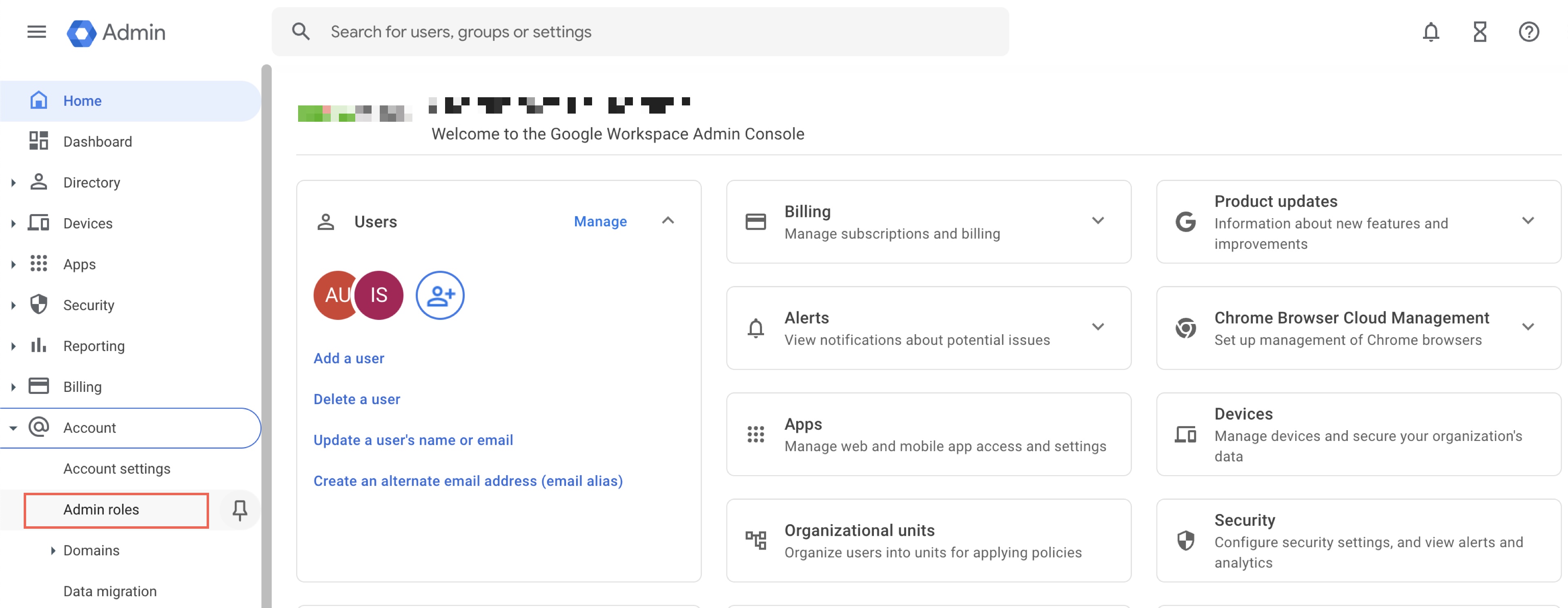
You will be redirected to the user role list page by clicking the same, as illustrated in Figure 5 below.
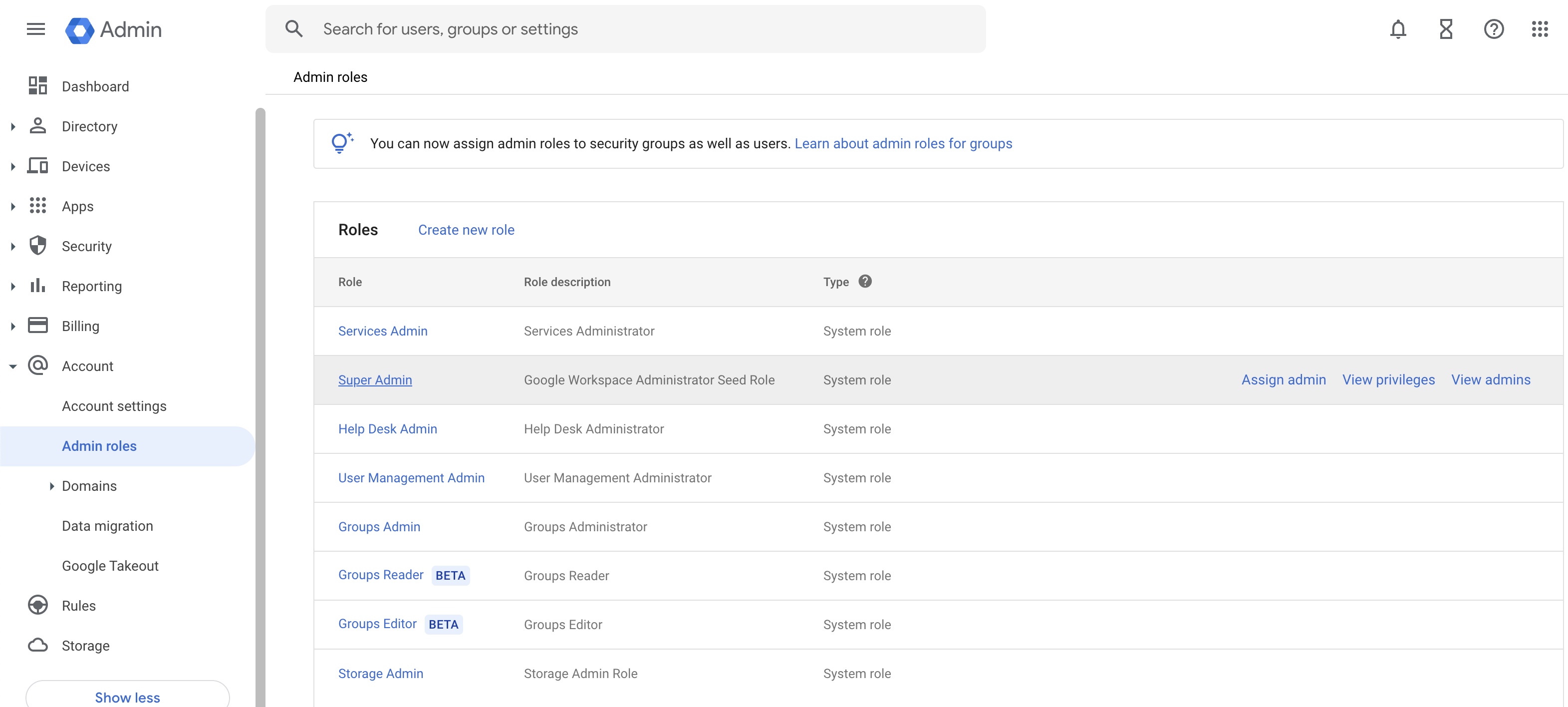
On the role list page, you can view all the types of roles available to assign for a particular user in a tabular form, as illustrated in Figure 5 above.
Click on the Super Admin role link to assign a new user to it.
After clicking the Super Admin link, the system will redirect to the page where all the users assigned as Super Admin will be listed, as illustrated in Figure 6 below.
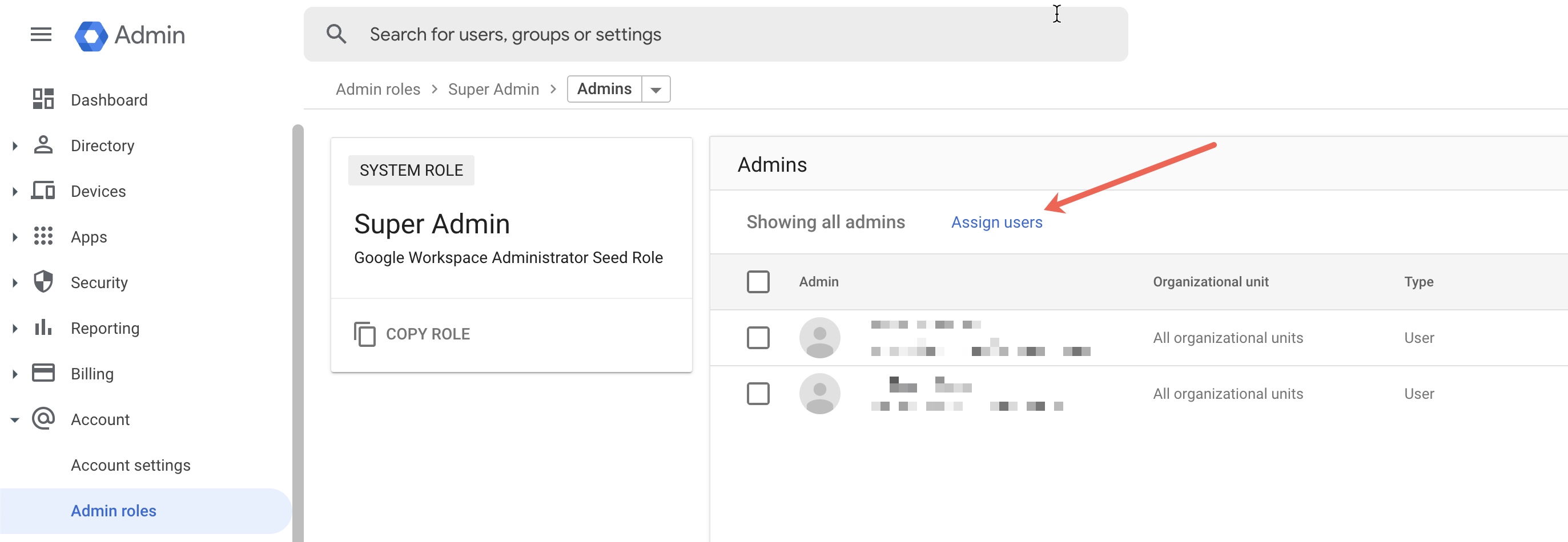
Click on the Assign Users link available on the top of the screen, as illustrated in Figure 6 above, and the system will open a new screen will open, as shown in Figure 7 below.

Type the username or email ID to which you want to assign the super admin role in the textbox, as illustrated in Figure 7 above and the system will search the particular user. It will show in the list if it is available, as illustrated in Figure 8 below.
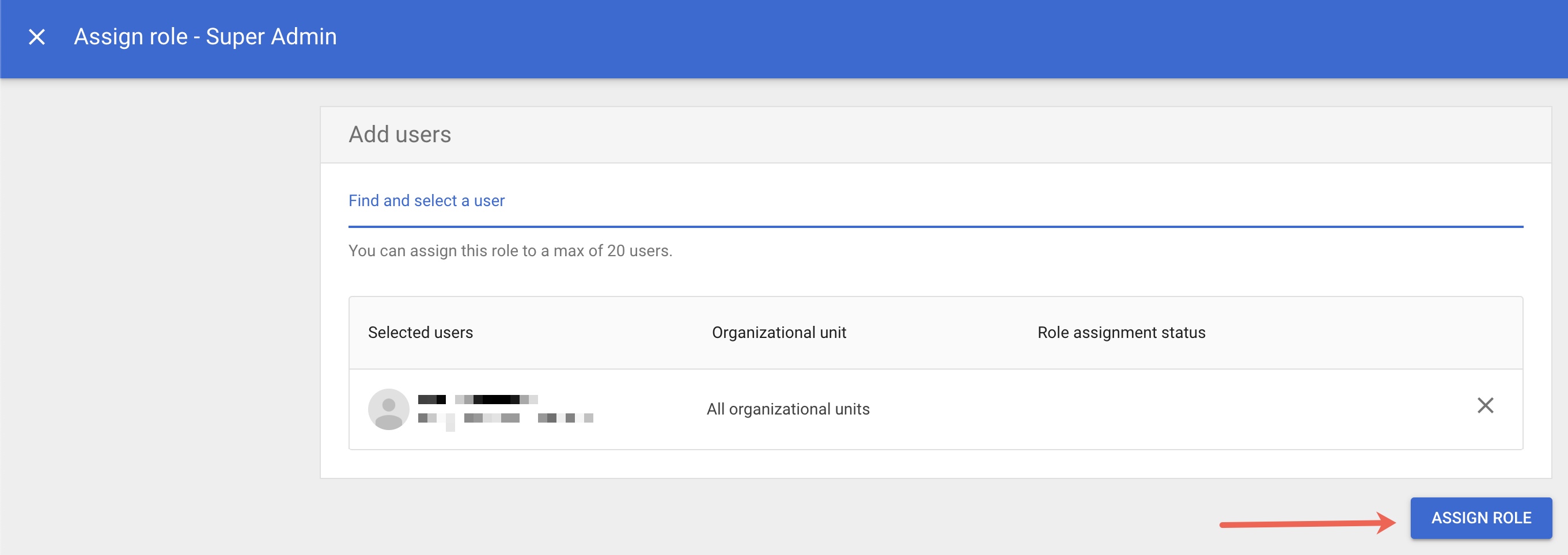
After selecting the user, click on the ASSIGN ROLE button available on the right side of the screen, and Google will add the user as the super admin, as illustrated in Figure 8 above.
The other roles that can be assigned to a user are:
- Services Admin
- Help Desk Admin
- User Management Admin
- Groups Admin
- Groups Reader (Currently on the Beta version)
- Groups Editor (Currently on the Beta version)
- Storage Admin
Conclusion
Managing users and assigning roles in Google Workspace can be a manageable task. This guide aims to streamline the process, ensuring that even those with limited experience can efficiently perform these tasks. For more advanced functionalities and custom solutions, contact the Batoi Support Team.


























